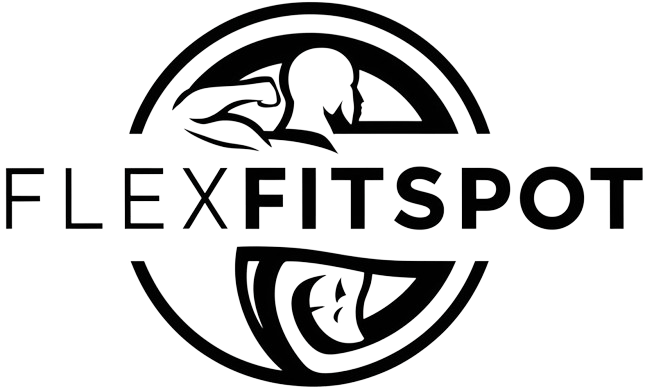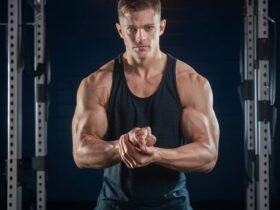Introduction to Full Body Calisthenics Workout no Equipment
Calisthenics is a form of exercise that leverages the weight of the practitioner’s own body to build strength, flexibility, and endurance. Originating from ancient Greek practices, the term itself is derived from the Greek words “kallos,” meaning beauty, and “sthenos,” meaning strength. This form of physical training has been utilized for centuries by soldiers, athletes, and fitness enthusiasts to enhance their physical capabilities without the need for specialized equipment.
One of the most significant advantages of calisthenics is its accessibility. Unlike weightlifting or gym-based workouts, calisthenics requires no equipment, making it suitable for individuals of all fitness levels. Whether you are a beginner looking to start a fitness journey or an experienced athlete aiming to refine your physical prowess, calisthenics offers an inclusive platform to achieve your fitness goals.
The core principle of calisthenics revolves around using body weight as resistance. Exercises such as push-ups, pull-ups, squats, and planks focus on natural body movements, promoting functional strength that translates into daily activities and other physical pursuits. This form of training not only builds muscle but also improves cardiovascular health, coordination, and agility.
Furthermore, calisthenics emphasizes the importance of holistic fitness. By incorporating a range of movements, it ensures a balanced development of strength, flexibility, and endurance. This comprehensive approach can help prevent injuries and enhance overall physical performance. Additionally, calisthenics can be performed in various settings, from home to outdoor parks, making it a versatile and adaptable workout method.
In summary, calisthenics is a timeless and effective form of exercise that harnesses body weight for resistance, promoting a well-rounded fitness regimen accessible to everyone. Its focus on natural body movements ensures a balanced development of strength, flexibility, and endurance, making it an invaluable component of any fitness routine.
Benefits of No-Equipment Workouts
Engaging in no-equipment workouts brings a multitude of advantages that cater to various fitness goals, from muscle building to fat loss, and overall fitness enhancement. One of the primary benefits is the unparalleled convenience these workouts offer. Without the need for specialized equipment, you can exercise anywhere — whether in the comfort of your home, at a park, or even while traveling. This eliminates the common barrier of not having access to a gym or workout tools, making it easier to maintain a consistent fitness routine.
Cost-effectiveness is another significant advantage of no-equipment workouts. Traditional gym memberships and home exercise equipment can be expensive, posing a financial burden for some. In contrast, bodyweight exercises require no financial investment, making them accessible to everyone regardless of their economic situation. This democratization of fitness enables a broader range of individuals to pursue and achieve their health and wellness goals.
Moreover, no-equipment workouts are incredibly versatile and can target a wide variety of muscle groups. Exercises such as push-ups, squats, lunges, and planks can be modified in numerous ways to increase intensity and focus on different areas of the body. This versatility ensures a comprehensive full-body workout, promoting balanced muscle development and functional strength.
Despite the absence of weights or machines, no-equipment workouts can still be highly effective. They facilitate muscle building by leveraging body weight as resistance, which can be just as challenging and beneficial as traditional weight training. Additionally, these exercises often incorporate compound movements, engaging multiple muscle groups simultaneously, which boosts calorie burn and aids in fat loss. The dynamic nature of bodyweight training also enhances cardiovascular fitness, flexibility, and coordination, contributing to overall physical health.
In essence, no-equipment workouts provide a practical, cost-effective, and efficient means of achieving a well-rounded fitness regimen, proving that you don’t need expensive gear to stay in top shape.
Warm-Up Routine
Before engaging in a full-body calisthenics workout, it is imperative to prepare your body with a comprehensive warm-up routine. Warming up not only primes your muscles for the exercises ahead but also reduces the risk of injury and enhances overall workout performance.
Start with dynamic stretches and movements that target various muscle groups. Arm circles are an excellent way to loosen the shoulder joints and increase blood flow to the upper body. Perform these by extending your arms out to the sides and making small circles, gradually increasing the diameter. Aim for 10 rotations forward and 10 backward.
Next, incorporate leg swings to activate the hip flexors and the muscles around the knee joints. Stand on one leg, holding onto a stable surface for balance if needed, and swing the opposite leg forward and backward. Repeat this movement 10 times on each side. Additionally, lateral leg swings can be performed by swinging the leg from side to side, which helps in engaging the inner and outer thigh muscles.
Torso twists are crucial for mobilizing the spine and warming up the core muscles. Stand with your feet shoulder-width apart, place your hands on your hips, and gently rotate your upper body from side to side. Perform 15 twists on each side, ensuring that your movements are controlled and deliberate.
Incorporating these dynamic stretches not only prepares your body for the physical demands of a calisthenics workout but also promotes flexibility and range of motion. A proper warm-up increases heart rate and blood circulation, delivering oxygen and nutrients to the muscles more efficiently. This preparation is essential for optimizing performance and ensuring a safe, effective workout session.
Upper Body Exercises
Engaging in upper body exercises without equipment is not only practical but also highly effective for building strength and muscle tone. Calisthenics workouts leverage your own body weight to provide resistance, making them accessible and versatile. Below, we explore some key exercises that target the upper body, focusing on proper form and technique to ensure optimal results and minimize the risk of injury.
Push-Ups: The push-up is a foundational upper body exercise that targets the chest, shoulders, and triceps. Begin in a plank position with your hands placed slightly wider than shoulder-width apart. Keep your body in a straight line from head to heels. Lower your chest to the ground by bending your elbows, then push back up to the starting position. Variations include wide push-ups, diamond push-ups, and decline push-ups, each emphasizing different muscle groups. Proper form is crucial; avoid sagging hips or flared elbows to prevent strain.
Tricep Dips: For tricep dips, you can use a sturdy surface like a bench or a chair. Sit on the edge with your hands gripping the edge, fingers facing forward. Extend your legs and slide your hips off the surface, supporting your weight with your arms. Lower your body by bending your elbows to about 90 degrees, then push back up to the starting position. Ensure your elbows remain close to your body to effectively target the triceps. Adjusting the position of your legs can increase or decrease the difficulty.
Pull-Ups: If you have access to a pull-up bar, this exercise is excellent for working the back, shoulders, and biceps. Grip the bar with your hands slightly wider than shoulder-width apart, palms facing away. Hang with your arms fully extended, then pull your body up until your chin is above the bar. Lower yourself back down with control. Focus on engaging your back muscles and maintaining a steady, controlled movement to maximize effectiveness and reduce the risk of injury. Variations such as chin-ups, with palms facing towards you, can further diversify your routine.
By incorporating these upper body exercises into your routine, you can achieve a balanced and comprehensive workout. Always prioritize proper form and listen to your body to ensure a safe and effective training session.
Lower Body Exercises
Lower body exercises are fundamental components of any comprehensive calisthenics workout, particularly because they help build strength, endurance, and stability without the need for equipment. Among the most effective exercises are squats, lunges, and calf raises. Each of these movements targets different muscle groups within the legs and glutes, ensuring a well-rounded lower body workout.
Squats are a staple exercise that primarily engages the quadriceps, hamstrings, glutes, and calves. To perform a basic squat, stand with your feet shoulder-width apart, keeping your back straight and your chest up. Bend your knees and lower your hips as if you are sitting back into a chair, ensuring your knees do not extend past your toes. Variations of squats, such as jump squats and pistol squats, add intensity and additional muscle engagement. Jump squats incorporate a plyometric element, enhancing explosive power by pushing off the ground to jump at the top of the squat. Pistol squats, on the other hand, are single-leg squats that significantly challenge balance and unilateral leg strength.
Lunges are another excellent lower body exercise that targets the quadriceps, hamstrings, and glutes while also working on core stability. To execute a lunge, take a step forward with one leg and lower your hips until both knees are bent at a 90-degree angle. Ensure that your front knee is directly above your ankle and your back knee hovers just above the ground. Alternate legs to ensure balanced muscle development. Variations include walking lunges and reverse lunges, which can further diversify your routine and target muscles from different angles.
Calf raises are essential for strengthening the calf muscles, which are often overlooked in lower body workouts. Stand with your feet hip-width apart and slowly rise onto the balls of your feet, lifting your heels as high as possible before slowly lowering them back down. This movement can be performed on flat ground or on an elevated surface, such as a step, to increase range of motion and intensity. Incorporating single-leg calf raises can also help improve balance and unilateral strength.
Proper form is crucial in all these exercises to maximize effectiveness and prevent injury. Focus on controlled movements, proper alignment, and breathing techniques to ensure a safe and productive workout. By integrating these lower body exercises into your calisthenics routine, you can achieve significant strength gains and muscle development without the need for any equipment.
The core is a fundamental component of the body, playing a crucial role in overall stability and strength. For those looking to enhance their abdominal muscles and improve stability, calisthenics offers a variety of effective core exercises that require no equipment. Central to these exercises is the plank, a staple in core workouts due to its simplicity and effectiveness. By maintaining a straight line from head to heels while engaging the core, the standard plank challenges the abdominal muscles and builds endurance. Variations such as side planks further target the obliques, offering a comprehensive core workout by requiring balance and stability on one arm.
Bicycle crunches are another excellent exercise for targeting the core. This dynamic movement involves lying on the back, with hands behind the head, and bringing alternating elbows to opposite knees while extending the other leg. This motion not only engages the rectus abdominis but also works the obliques, promoting a balanced and strong midsection. The continuous movement of bicycle crunches also adds a cardiovascular element, which can contribute to overall fitness.
Leg raises are particularly effective for targeting the lower abdominal muscles. By lying flat on the back and lifting the legs to a 90-degree angle, individuals can engage the lower abs more intensely. For added challenge, slowly lowering the legs without touching the ground increases the workout’s intensity and effectiveness. This exercise also supports hip flexor strength, which is beneficial for various other physical activities.
A strong core is essential for maintaining better posture. It provides the necessary support for the spine, reducing the risk of back pain and improving overall body alignment. Furthermore, a robust core enhances performance in other exercises, such as squats and push-ups, by providing stability and power. By incorporating these core exercises into a calisthenics routine, individuals can achieve a well-rounded fitness regimen that promotes both strength and stability.
Full Body Combinations
In the realm of calisthenics, full body combination exercises stand out as highly effective means to engage multiple muscle groups simultaneously. These compound movements not only offer a comprehensive workout but also significantly enhance cardiovascular fitness and overall strength. Among the most notable exercises in this category are burpees, mountain climbers, and bear crawls.
Burpees are often hailed as one of the most complete bodyweight exercises. This dynamic movement integrates a squat, a push-up, and a jump into a seamless flow, targeting the legs, chest, arms, and core. Beyond muscle engagement, burpees also elevate the heart rate, making them an excellent choice for boosting cardiovascular endurance. Regular incorporation of burpees into your workout routine can lead to improved muscle tone, increased stamina, and enhanced metabolic rate.
Mountain climbers, another staple in calisthenics, combine the benefits of a plank with rapid knee drives to the chest. This exercise requires core stability, arm strength, and leg agility, making it a powerful full body workout. As you perform mountain climbers, your abdominal muscles work to stabilize the body, while the rapid leg movements elevate the heart rate, contributing to cardiovascular fitness. This exercise also enhances coordination and agility, proving beneficial for overall athletic performance.
Bear crawls, a versatile and functional movement, mimic the quadrupedal locomotion of bears. This exercise involves crawling on hands and feet, engaging the shoulders, chest, core, and legs. Bear crawls are excellent for building functional strength, improving mobility, and enhancing coordination. The continuous movement also promotes cardiovascular health, making it a comprehensive addition to any workout regimen.
Integrating these full body combination exercises into your calisthenics routine ensures a balanced development of strength, endurance, and cardiovascular health. By engaging multiple muscle groups simultaneously, these exercises maximize workout efficiency and promote overall fitness. Whether you are a beginner or an advanced practitioner, burpees, mountain climbers, and bear crawls offer scalable challenges that can be modified to suit your fitness level.
Cool Down and Stretching
After completing a vigorous full body calisthenics workout, it is crucial to incorporate a cool-down routine that aids in the body’s recovery process. Cooling down helps to gradually reduce the heart rate and minimize the risk of injury. This phase also includes static stretching, which focuses on elongating muscles to enhance flexibility and reduce muscle soreness.
Begin your cool-down routine with light aerobic activity, such as walking in place or gentle jogging, for about 3-5 minutes. This helps to slowly bring your heart rate back to its resting state. Following this, proceed with static stretches targeting the major muscle groups engaged during the workout.
For the hamstrings, sit on the ground with one leg extended and the other bent. Reach towards your toes with a straight back and hold the position for 20-30 seconds on each side. To stretch the quadriceps, stand on one leg, pull the opposite foot towards your glutes, and hold for 20-30 seconds, ensuring you maintain balance.
To address the shoulders, extend one arm across your body and use the opposite hand to press it closer to your chest, holding for the same duration. For the chest, clasp your hands behind your back and gently lift them upwards while keeping your arms straight, feeling the stretch across your chest and shoulders.
Incorporating static stretching into your cool-down routine is essential for several reasons. Stretching helps to alleviate muscle stiffness and soreness, which are common after intense physical activity. It also improves overall flexibility, allowing for a greater range of motion in subsequent workouts. Furthermore, it promotes better blood circulation, facilitating the removal of metabolic waste products and accelerating muscle recovery.
By dedicating time to cool down and stretch, you not only enhance your physical performance but also ensure a more efficient recovery, paving the way for consistent and effective workouts in the future.




























